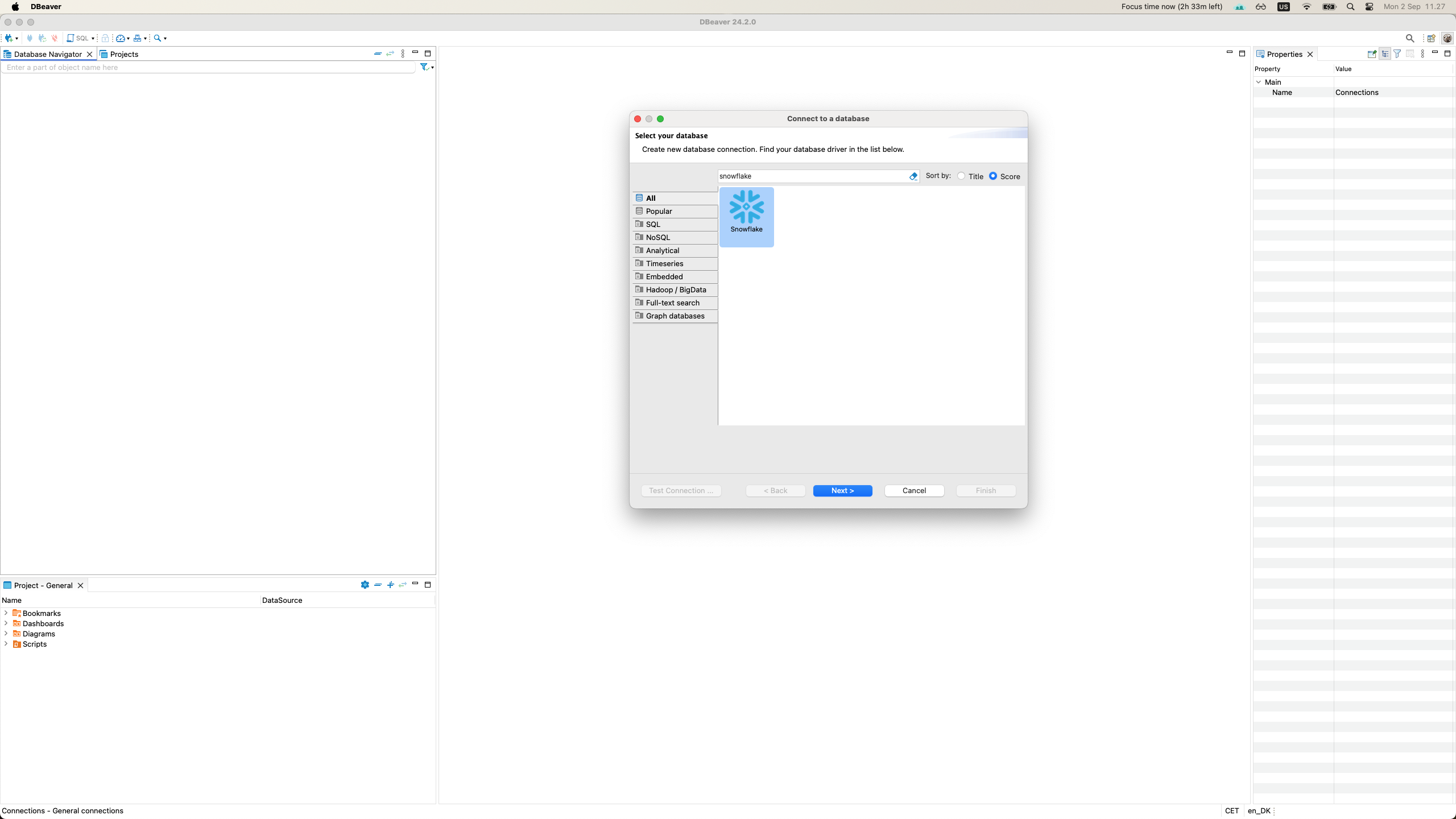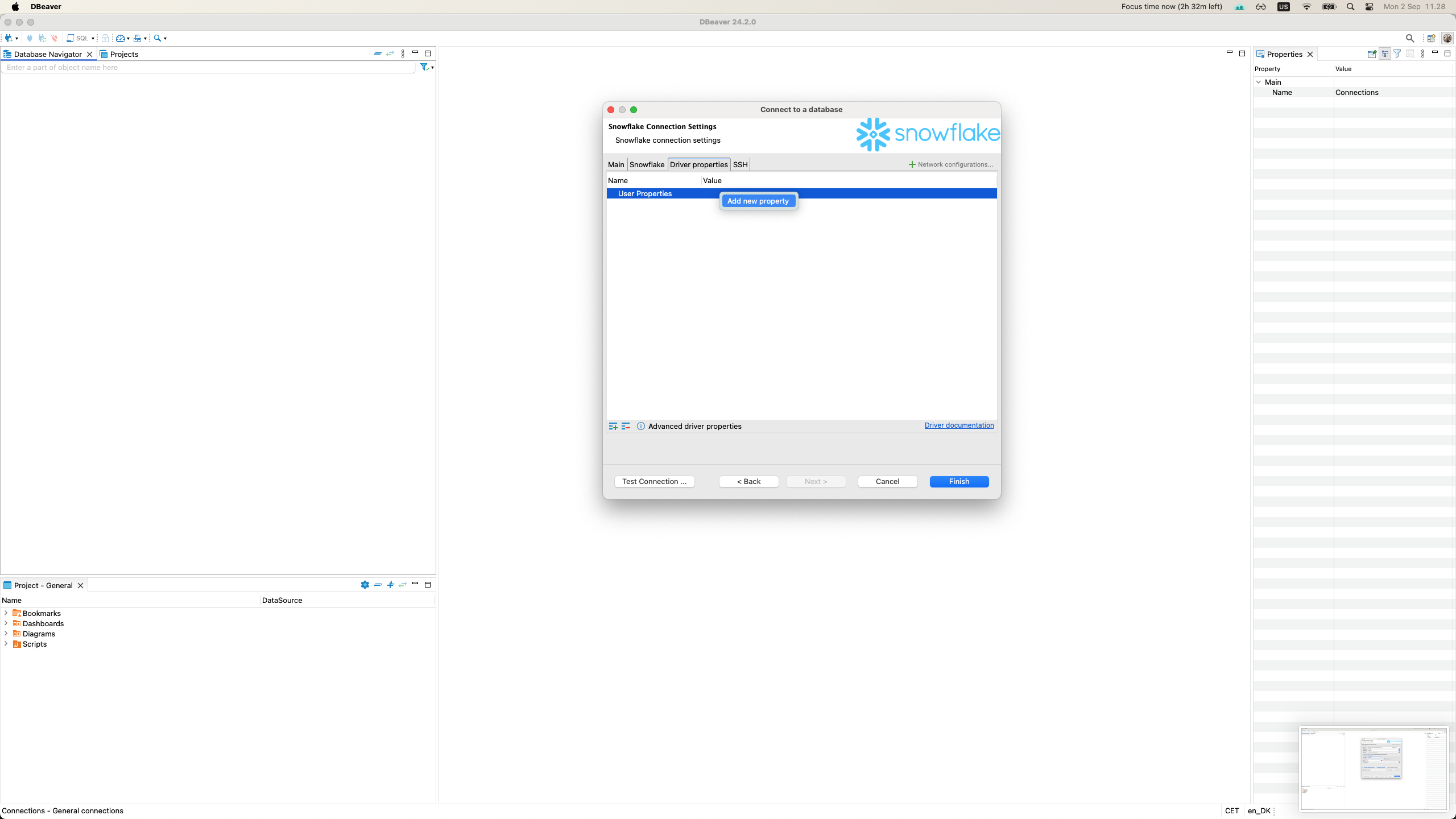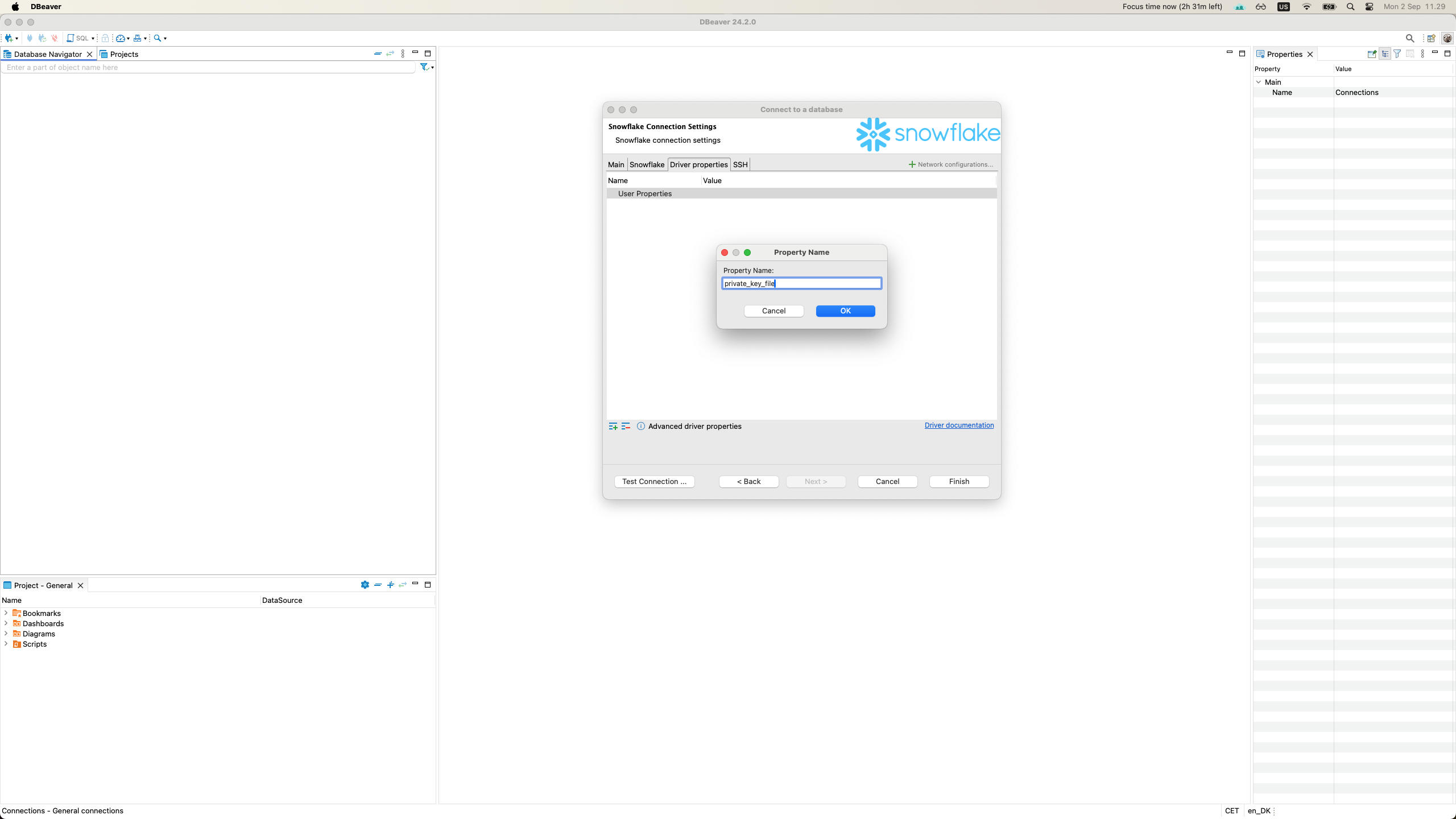Getting Access
How to access the Partner Data Warehouse
Overview
Access to Monta's Partner Data Warehouse is based on Key Pair auth for now. Please note that not all BI or dashboard tools support this. If your solution does not support setting up access with private/public keys you won't be able to access the PDWH with it.
Requirements
To gain access to the Partner Data Warehouse, follow these steps:
-
Partnership and Agreement: Ensure you are part of our Partner Program and have a mutual data sharing agreement in place.
-
Key Generation:
- Generate a public and private key pair following this guide.
- Send us (Monta) the public key via email or Slack. This key is not secret and can be shared openly.
-
Access Information: Upon receiving your public key, we will provide you with the Snowflake account identifer and host URL needed to access the data warehouse. We will send this via Slack or email.
-
Connect to Snowflake:
- SnowSQL (Snowflake CLI tool)
- Snowflake Python Connector
- DBeaver or other compatible BI tools
Key Generation
- Key Pair Authentication offers enhanced security. Generate a 2048-bit RSA key pair as minimum, following the steps outlined in the Snowflake documentation.
- Client Support: Most Snowflake clients support key pair authentication and rotation, including SnowSQL, Python Connector, JDBC Driver, and others.
Steps for Key Configuration in Mac OS or Linux system (openssl library required)
-
Generate the Private Key: Use OpenSSL to generate a private key. We only support unencrypted keys.
openssl genrsa 2048 | openssl pkcs8 -topk8 -inform PEM -out rsa_key.p8 -nocrypt
-
Generate the Public Key: With the private key generated, produce the public key using OpenSSL.
- Command:
openssl rsa -in rsa_key.p8 -pubout -out rsa_key.pub
- Command:
Connecting to Snowflake
SnowSQL (Snowflake CLI tool)
Installing SnowSQL
You can find installation instructions for SnowSQL for your OS here
Connecting with SnowSQL
After installing SnowSQL you can connect to Snowflake and start querying your tables with the command below. Replacing {examplepartner} with your partner name, and the ~/rsa_key.p8 with the location of your private key file.
snowsql -a st17140.eu-west-1 -h st17140.eu-west-1.snowflakecomputing.com -u {examplepartner} --private-key-path ~/rsa_key.p8 -w PARTNER -d PARTNER -s PRODUCTION_{examplepartner}
Snowflake Python Connector
You can use Python for programmatic access to your tables via the Snowflake Python connector.
Refer to the installation instructions in the Snowflake docs.
When connecting to Snowflake via the Python Connector, you should refer to the key-pair authentication part of the docs. Replacing the following values for user, warehouse, account etc. in the code example
user: {examplepartner}
account: The account identifier is provided by us, after we receive your public key.
warehouse: "PARTNER"
database: "PARTNER"
schema: "PRODUCTION_{examplepartner}
Schema names may differ basing on how you connectIf your partner name contains hyphens, replace those with underscores. But only for the schema. E.g.
partner-onebecomespartner_one
DBeaver or other compatible BI tools
DBeaver has a free community edition . Download and follow instructions to install.
- Database→New Database Connection

- Find Snowflake and choose Next

- Fill in the info as in the screenshot below.
- Host:
st17140.eu-west-1.snowflakecomputing.com:443 - Database and Warehouse
PARTNER - Schema
PRODUCTION_<PARTNER_NAME> - Username
<PARTNER_NAME>
- Host:
Replace <PARTNER_NAME> with your relevant partner name.

- Driver properties → Right click and add new property. Call this private_key_file and press OK.


- Click right next to the field that now says
private_key_fileand put in the path to your private key as the value.

- Click finish and you should see a Database called PARTNER under the Database Navigator
Updated 7 months ago
